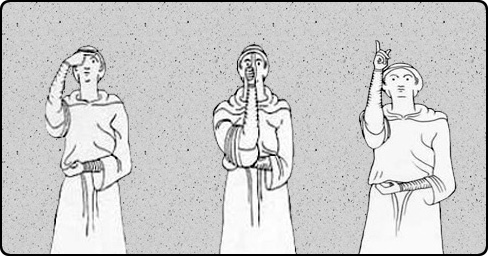
The life of a monk is often characterized by solitude, contemplation, and a commitment to silence. However, the question arises: can monks who take vows of silence utilize American Sign Language (ASL)? While traditional monastic vows emphasize vocal silence, the use of non-verbal communication like ASL presents a unique and nuanced consideration. This article delves into the world of monasticism, exploring the nature of silence vows and the potential for ASL as a permissible form of expression within these communities.
We will examine the historical context of monastic silence, delve into the intricacies of American Sign Language, and explore how different monastic communities approach the use of ASL. Ultimately, we aim to shed light on this fascinating intersection between tradition, communication, and the evolving nature of religious practice.
Monks and Silence Vows
Silence vows are a cornerstone of many monastic traditions, serving as a powerful tool for spiritual growth and self-reflection. By abstaining from unnecessary speech, monks cultivate inner peace, deepen their connection with the divine, and create an environment conducive to contemplation. The vow of silence is not merely about physical restraint; it encompasses a broader commitment to mindful communication and attentiveness to thoughts and emotions.
The specific nature of silence vows varies across different monastic orders. Some traditions require complete silence throughout the day, while others allow for limited verbal interaction during designated times or with specific individuals. Regardless of the specific rules, the underlying principle remains consistent: silence fosters a state of heightened awareness and facilitates spiritual progress.
American Sign Language (ASL)

American Sign Language (ASL) is a rich and complex language with its own grammar, syntax, and vocabulary. It is not simply a visual representation of spoken English but a distinct linguistic system used by millions of deaf and hard-of-hearing individuals in the United States and Canada. ASL utilizes a combination of handshapes, facial expressions, body movements, and spatial relationships to convey meaning.
Learning ASL requires immersion and practice, as it involves mastering a unique set of visual cues and grammatical structures. It is a fully developed language capable of expressing a wide range of ideas, emotions, and concepts with nuance and precision. ASL has its own cultural heritage and community, fostering a sense of belonging and shared identity among its users.
ASL as Non-Verbal Communication
The use of ASL presents a compelling alternative to spoken language for individuals who are deaf or hard-of-hearing. It allows them to participate fully in social interactions, access education, and express themselves creatively. ASL transcends the limitations of vocal communication, enabling individuals to connect on a deeper level through visual cues and shared experiences.
Moreover, ASL can be valuable even for those who are not deaf or hard-of-hearing. Learning ASL fosters empathy and understanding towards the deaf community, breaking down barriers and promoting inclusivity. It also enhances cognitive abilities, as it requires individuals to think visually and process information in a different way.
Monastic Communities and ASL

The integration of ASL into monastic communities presents a unique challenge and opportunity. While traditional vows often emphasize vocal silence, the use of non-verbal communication like ASL could be viewed as a permissible form of expression that aligns with the principles of mindfulness and attentiveness.
Some monastic orders may embrace ASL as a way to connect with deaf individuals seeking spiritual guidance or simply to create a more inclusive environment. Others may approach it with caution, requiring careful consideration and dialogue within the community. Ultimately, the decision regarding ASL usage would depend on the specific traditions, beliefs, and needs of each individual monastery.
Permissible Expression
The question of whether can monks who vow silence use asl hinges on the interpretation of silence vows within a particular monastic tradition. Some argue that silence encompasses only spoken words, allowing for non-verbal communication like ASL as a permissible form of expression. Others maintain that any form of outward communication, including sign language, violates the spirit of the vow.
Ultimately, the decision rests with each individual monastery and its leadership. They must carefully consider the principles underlying their vows, the potential benefits and challenges of incorporating ASL, and the needs of their community members. Open dialogue and a willingness to adapt to evolving circumstances are crucial in navigating this complex issue.
Conclusion
The intersection of monastic silence and American Sign Language presents a fascinating dilemma with no easy answers. While traditional vows emphasize vocal restraint, the use of non-verbal communication like ASL offers a unique avenue for expression and connection.
Ultimately, the question of whether can monks who vow silence use asl depends on the specific interpretations and practices within individual monastic communities. As religious traditions evolve and adapt to changing societal norms, open dialogue and a willingness to embrace new forms of communication will be essential in navigating this complex landscape.
